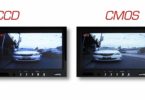Twisted Pair vs Fiber Optic Cable
Summary: Difference Between Twisted Pair and Fiber Optic Cable is that Twisted-pair cable consists of one or more twisted-pair wires bundled together. Each twisted-pair wire consists of two separate insulated copper wires that are twisted together. The wires are twisted together to reduce noise. While the core of a fiber-optic cable consists of dozens or hundreds of thin strands of glass or plastic that use light to transmit signals. Each strand, called an optical fiber, is as thin as a human hair. Inside the fiber-optic cable, an insulating glass cladding and a protective coating surround each optical fiber.

Twisted Pair
One of the more commonly used transmission media for network cabling and telephone systems is twisted-pair cable. Twisted-pair cable consists of one or more twisted-pair wires bundled together. Each twisted-pair wire consists of two separate insulated copper wires that are twisted together. The wires are twisted together to reduce noise. Noise is an electrical disturbance that can degrade communications.
Fiber Optic
The core of a fiber-optic cable consists of dozens or hundreds of thin strands of glass or plastic that use light to transmit signals. Each strand, called an optical fiber, is as thin as a human hair. Inside the fiber-optic cable, an insulating glass cladding and a protective coating surround each optical fiber.
Fiber-optic cables have the following advantages over cables that use wire, such as twisted-pair and coaxial cables:
Capability of carrying significantly more signals than wire cables.
Faster data transmission.
Less susceptible to noise (interference) from other devices such as a copy machine.
Better security for signals during transmission because they are less susceptible to noise.
Smaller size (much thinner and lighter weight).
Disadvantages of fiber-optic cable are it costs more than twisted-pair or coaxial cable and can be difficult to install and modify. Despite these limitations, many local and long-distance telephone companies are replacing existing telephone lines with fiber-optic cables, enabling them to offer fiber Internet access to home and business users.
Also Read:
Difference Between Fiber Optic Cable and Coaxial Cable
Difference Between Twisted Pair and Coaxial Cable
Difference Between Wireless Access Point and Router







Leave a Comment
You must be logged in to post a comment.